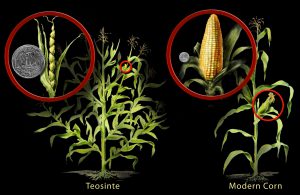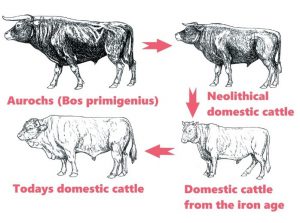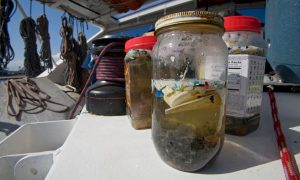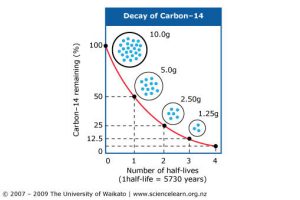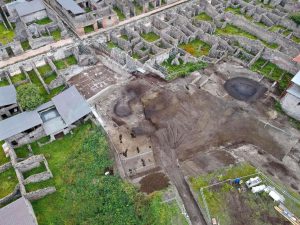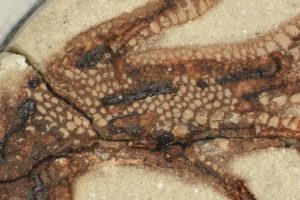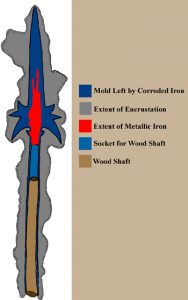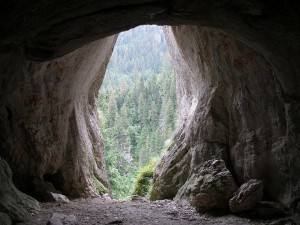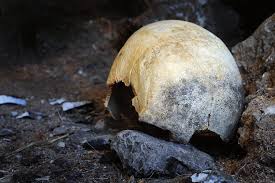Have you ever heard of “Indian Corn”? All corn is “Indian Corn”. The Native Americans discovered a way to make the corn they had more edible and bountiful, to feed a vast majority economically. Corn started out as a black big, almost pointy and hard kernels called Teosinte. (NativeTech)
Photo Credit: Nicolle Rager Fuller, National Science Foundation
According to the National Science Foundation, in 2005, a scientist in California, Brandon Gaut, helped to make this process more visible by recreating it. He did exactly what the Native Americans did around 10,000 years ago. The scientists took a Teosinte plant, which was only 2-3 inches long and produced about 5 to 12 kernels, which were very hard and mostly for animals to eat. When early botanist found this plant, the scientists quickly dismissed how it could be related to modern corn. Especially when our modern corn is about 12 inches long, and 500 or more kernels. (National Science Foundation, 2005)
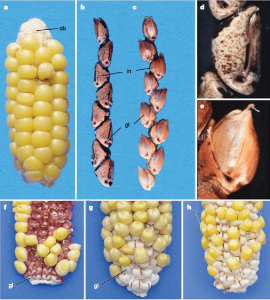
Here is a chart of the corn broken down to show the differences. The picture has a chart at the bottom that describes it in scientific terms. The first photo is what we know Maize (corn) to be today. The picture (B) is the grass seed Teosinte ear that has the rachis internode (in) and glume (gl) labelled. The picture ( C) is one of the first cultivations of maize and teosinte. The picture (d) is the actual closeup of the teosinte fruitcase. The picture (e) is a closeup of the cultivation between the maize and the teosinte. The next three pictures at the bottom of the chart (f,g,h), show us what the tesonite glumes and internodes look like in the corn after all the cultivations.
Wang, H.H., Nussbaum-Wagler, T., Li, B., Zhao, Q., Vigouroux, Y., Faller, M., Bomblies, K., Lukens, L., & Doebley, J. (2005). The origin of the naked grains of maize. Nature, 436, 714-719.
Although scientists cannot say how long this cultivation process took. There is some archaeological evidence about how the corn plant completely lost its genetic diversity, which would mean a domestication event. The scientists from the National Science Foundation, believe that it took around 3,500 teosinte plants to create the modern corn. They figured out from this experiment that it took about 1,000 genes from the Teosinte plant to create the corn. (National Science Foundation, 2005) During this cultivation process, corn lost its survival ability in the wild.
The cultivation process softened the kernel up and infused it into the cob more. The new corn gained larger ears with more rows of soft kernels. (NativeTech) There is some archaeology that shows this cultivation happened about 6,000 years ago. Archaeology has shown that Argiculture is around 9,000 – 10,000 years old. Archaeologists have found the domestication event of corn to be between 6,000 and 10,000 years old in central Mexico. (NativeTech)
Image Credit:
Wendy and Michael Scullin
UI-OSA Photo Archives
Native Americans made over 250 different kinds of corn, all different colors. (Hilarie, Larry, 1)Maybe these different kinds of corn are just what happened during different cultivations? Did the Natives like them enough to eat?
Further Reading
Follow the “Three Sisters Method” for planting
https://homeguides.sfgate.com/native-american-method-growing-corn-69787.html
WOW! You can eat the colored “Indian Corn”
http://eatyourwayclean.com/can-you-eat-indian-corn-yes-and-heres-how/
“Indian Corn and edible?”
https://recipes.howstuffworks.com/everything-about-indian-corn.htm

